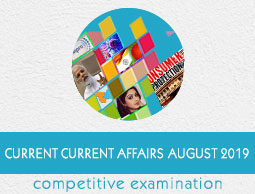
- Appointments
- Awards
- Bills & Acts
- Books & Authors
- Committees
- Deaths
- Defence
- Economic
- Environment
- Banking and Finance
- Important Days
- International
- Miscellaneous
- National
- Persons in News
- Places in News
- Regional
- Reports
- Resignations & Retirements
- Science & Technology
- Sports
- August 2019 - Exams Resources
- Current Affairs - Quiz
- Current Affairs - Test
- Current Affairs - PDF
Current Affairs Aug 2019 - Science & Technology
1 - Cabinet approved ISRO Technical Liaison Unit at Moscow

The Union Cabinet has approved the setting up of ISRO Technical Liaison Unit (ITLU) at Moscow, Russia. An average annual expenditure of about Rs. 1.50 crore per annum is anticipated to be incurred at ITLU in Moscow, Russia towards salary, office expenses, rent, taxes etc.
The ISRO Technical Liaison Unit (ITLU) at Moscow will enable effective technical coordination for timely interventions on diversified matters with Russia and neighbouring countries for realization of the programmatic targets of ISRO.
2 - IIT-KGP researchers develop tech for solid waste management
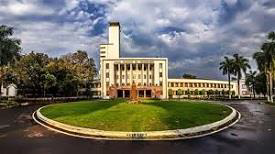
A research team at IIT Kharagpur has developed a technology which can generate energy from solid waste with high moisture content. The new technology - Hydro Thermal Carbonization (HTC) - can convert municipal solid waste to biofuel, soil amendment and absorbents.
HTC is industrial-scale reactor with improved heat integration system. The moisture in the waste is used to the advantage of the process which uses water for the reaction. The biofuel generated as the recovered output can help curb air pollution.
3 - India to conduct its biggest tuberculosis preventive trial with two new vaccines
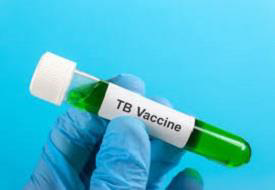
Indian Council of Medical Research (ICMR) launched Indias first large-scale trial for two new tuberculosis (TB) vaccines named IMMUVAC and VPM1002 with an aim to replace the BCG vaccine. This will be first large preventive TB vaccine trial involving more than 12,000 healthy household contacts of newly diagnosed TB patients from across six states.
The Bacille Calmette-Guerin (BCG) vaccine, which is used currently, is over 100 years old and is partially effective in protecting young children, particularly from the most severe forms of TB.
4 - ISRO sets up Space Situational Awareness Control Centre in Bengaluru
Indian Space Research Organisation (ISRO) has set up a Directorate of Space Situational Awareness and Management aiming at protecting high valued space assets from space debris close approaches and collisions. A control centre is being established at Bengaluru. The Control Centre would facilitate the intensified activities foreseen for SSAM.
ISRO is currently dependent on North America Aerospace Defense Command (NORAD) datafor keeping track of space debris and monitoring our active and passive (dead) satellites.
5 - Australian student uses Artificial Intelligence to detect fast radio bursts
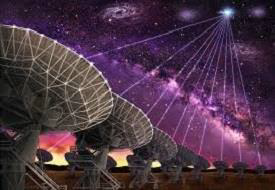
Wael Farah, an Australian student, has developed an automated system that uses artificial intelligence (AI) to revolutionise our ability to detect and capture fast radio bursts (FRBs) in real-time.
FRBs are mysterious and powerful flashes of radio waves from space, thought to originate billions of light years from the Earth. They last for only a few milliseconds or a thousandth of a second. FRBs can potentially be used to study matter around and between galaxies that is otherwise almost impossible to see.
6 - NASA satellite uncovered earth like habitat in 'first nearby super-Earth planet GJ 357 d
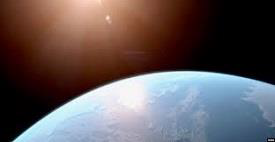
Researchers have uncovered first potentially habitable world outside our own solar system and earth-like planet, located just 31 light years away named as GJ 357 d planet, discovered in early 2019. GJ 357 d is located within the outer edge of its stars habitable zone, where it receives about the same amount of stellar energy from its star as Mars does from the Sun.
The planet weighs at least 6.1 times Earths mass, and orbits the star every 55.7 days at a range about 20% of Earths distance from the Sun.
7 - IIT Madras and NIOT researchers developed turbines to generate electricity through wave energy
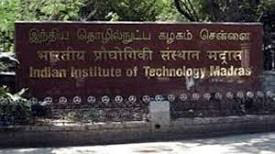
IIT-Madras has collaborated with National Institute of Ocean Technology (NIOT) to develop turbines that can generate electricity from waves along the country's 7,500-km-long coastline, estuaries and gulfs. The research is being headed at IIT Madras by Dr. Abdus Samad, Associate Professor, Department of Ocean Engineering.
The project is being funded by Ministry of Earth Sciences, Government of India, and focuses on improving the devices and machines used for wave energy harvesting.
8 - SpaceX launched Falcon 9 loaded with Israel's AMOS-1
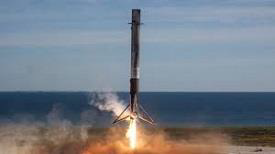
US carrier rocket Falcon 9, manufactured by SpaceX, successfully lifted off from a space center in Florida. It was loaded with Israeli AMOS-17 communication satellite. Amos-17 is set to replace Amos-5 satellite launched in 2011.
Communication with Amos-5 was lost in 2015. Amos-17, built by Boeing, will provide Ka, Ku and C-band signal transmission and expand Israeli communications satellite operator Spacecom's coverage in Africa, the Middle East and Europe.
9 - Mexican engineer discovered way to turn cactus leaves into a non-toxic, biodegradable plastic
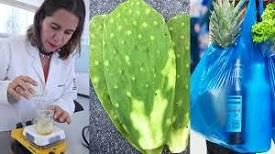
Sandra Pascoe Ortiz of the University of the Valley of Atemajac has developed a way to turn cactus leaves into non toxic and biodegradable material with similar properties to plastic. It will help cut down the amount of single-use plastics.
The new alternative plastics start to break down after sitting in the soil for a month. In water, they break down in a matter of days. This new plastic is also non-toxic in nature. So, even if the fake plastics make their way into the ocean, theyll either feed the fishes or dissolve instead of hurting wildlife.
10 - Huawei launched its own operating system: HarmonyOS

Chinese mobile giant Huawei has launched its own operating system the HongmengOS, known in English as the HarmonyOS. The open-source OS can be used across different devices, from smartphones to smart speakers and even sensors.
In the wake of the US-China trade war, Huawei has recently launched its own operating system which is aimed to reduce the company's reliance on the Google-developed Android OS. In addition, to be on a par with Google Maps, it is planning to unveil its own mapping service known as Map Kit.
11 - UK researchers developed new technique to make cancer treatment more affordable
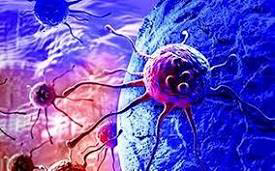
Researchers in the University of Sheffield in Britain developed a new technique that could make light-based cancer treatment more effective and safer for patients while reducing its cost. Light-based or photo-dynamic therapy is already a clinically-approved treatment, which uses drugs to destroy cancer cells but these drugs are frequently toxic leading to treatment failure.
Researchers developed tiny carbon nano-particles that can deliver cancer drugs to tumours. The researchers have sought to improve these drugs by using small carbon dots as a way to get the drug to the tumour.
12 - IIT Kharagpur researchers developed low-cost diagnostic device
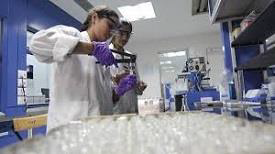
A team of Indian Institute of Technology Kharagpur researchers led by Prof Suman Chakraborty, has developed a low-cost and user friendly diagnostic device which can perform various pathological tests such as blood glucose and haemoglobin.
The device will test blood sample taken from a fingerprick on a paper strip based kit integrated with a smartphone and read out functions. It has LED light for imaging. The cost incurred will be Re 1.
13 - Researchers develop process to get bone implant material from eggshells
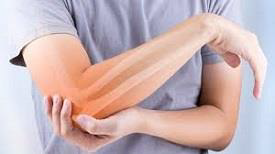
Researchers from National Institute of Technology (NIT)- Jalandhar and Indian Institute of Technology-Hyderabad developed procedure to synthesize bone implant material from waste eggshells.
These bone implant materials include tricalcium phosphate, a commonly-used bone substitute material which was made available from natural resources but now it will be synthesized from egg shells containing 95% minerals. This research will help in replacement of damaged and missing bones as now tricalcium phosphate from eggshells will be used instead of using commercially available tricalcium phosphate.
14 - Wipro collaborated with IISc on robotics and 5G
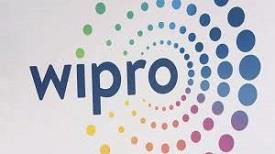
Wipro Limited announced a strategic partnership with the Indian Institute of Science to conduct advanced applied research in autonomous systems, robotics and 5G space. The two organizations have jointly set up the Wipro IISc Research and Innovation Network (WIRIN), a hybrid industry academia collaboration unit, which will drive idea discovery, research and innovation in technology and product design.
They will focus on the research and development of cutting-edge technologies in Artificial Intelligence, Machine Learning, Visual Computing, Human Computer Interaction (HCI) and Vehicle-to-everything communication (V2X). The Institute will benefit from advancing its research goal and capacity building.
15 - NASA takes first high-resolution measurements of Interplanetary Shock
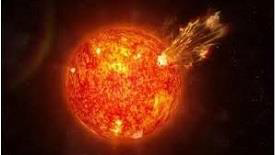
NASAs Magnetospheric Multiscale (MMS) mission took first high-resolution measurements of an interplanetary shock. Interplanetary shocks start at the Sun, which continually releases streams of charged particles called the solar wind.
Interplanetary shocks are a type of collisionless shock ones where particles transfer energy through electromagnetic fields instead of directly bouncing into one another. These collisionless shocks are a phenomenon found throughout the universe, including in supernovae, black holes and distant stars.
16 - Maitri App developed by Noida girls win US tech prize
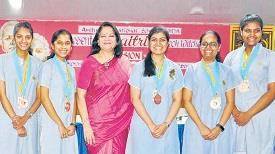
A team of five girls from Noida has developed an app called "Maitri" that helps connect children at orphanages with senior citizens in old-age homes. The all-girl team Tech Witches won bronze medal at the Technovation Challenge, the worlds largest technology and entrepreneurship programme for girls, held in San Francisco, USA.
Ananya Grover, Vanshika Yadav, Vasudha Sudhinder, Anushka Sharma and Arefa are all Class 12 students of Amity International School in Noida.
17 - Russia launched rocket carrying life-sized robot to International Space Station
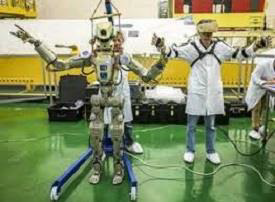
Russia launched a rocket carrying life-sized robot to the International Space Station (ISS) from Baikonur cosmodrome in Kazakhstan. The robot, named Fedor that weighs 160 kgs and is 5ft 11 inches tall, is the first ever sent into space by Russia. In order to test a new emergency rescue system, the robot was the Soyuz rocket's only passenger.
Fedor will learn new skills such as connecting and disconnecting electric cables, using standard items from a screwdriver and a spanner to a fire extinguisher, during its 10 days journey.
18 - California based start-up unveiled world's largest computer chip
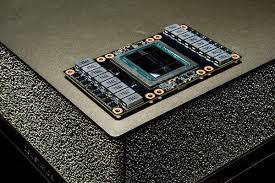
Californian start-up Cerebras Systems has unveiled the "world's largest computer chip" at the Hot Chips conference at Stanford University in Palo Alto, California. It is called Wafer Scale Engine and is bigger than an iPad.
The most powerful GPUs have 5,000 cores but the new chip has four lakh cores, all connected to each other by high-bandwidth connections. Hence it can handle complex machine learning challenges with less lag and lower power requirements.
19 - NASA honours Rolling Stones by naming rock on Mars after band
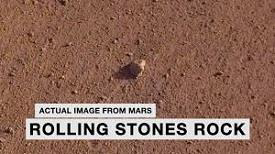
A team behind NASA's InSight lander has named a rock on Mars in honour of the iconic English band, 'Rolling Stones Rock'. The popular band consists of Mick Jagger, Keith Richards, Charlie Watts and Ronnie Wood
InSight is part of NASA's Discovery Program, managed by the agency's Marshall Space Flight Center in Huntsville, Alabama. The InSight mission is led by NASA's Jet Propulsion Laboratory, just up the road from the Rose Bowl in Pasadena.
20 - Russia sent its first humanoid robot Fedor into space
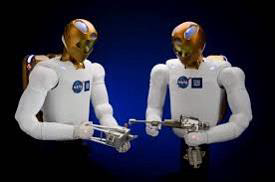
Russia has just sent its firs humanoid robot, Fedor (Final Experimental Demonstration Object Research), onboard the Soyuz rocket bound for the International Space Station (ISS). It was launched from Russia's Baikonur cosmodrome in Kazakhstan.
Fedor measures 1.8 metres tall and weighs 160 kilograms. It will spend 10 days aboard the ISS practising other skills, such as using tools to fix issues that might arise on the space station. Eventually it will be able to take part in space walks with other astronauts.
21 - Intel launched first artificial intelligence chip Springhill
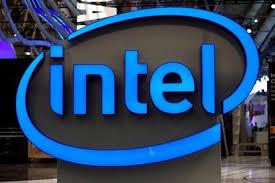
Intel revealed first artificial intelligence chip named as Intel Nervana NNP-I or Springhill. It will focus on AI to provide customers the right intelligence at the right time.
The chip is developed at its development facility in Haifa, Israel on a 10 nanometre Ice Lake processor that will allow it to cope with high workloads using minimal amounts of energy and deal with huge amounts of data generated. Springhill chip will help Intel Xeon processors in large companies to deal with complicated AI computations.
22 - Astra Rafael Communication System opened facility in Hyderabad
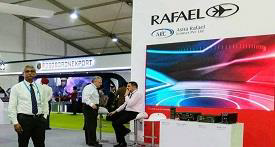
Astra Rafael Communication System inaugurated its state-of-the-art facility in Hyderabad. ARC is a joint venture between Astra Mircowave Products Ltd and Israel-based Rafael Advanced Defence Systems Ltd set up on a 51:49 % basis with an investment of Rs 35 crore.
ARC will design, develop and manufacture tactical communication systems for Indian armed forces. It is in line with the Make in India initiative. ARC would invest in high-endtechnology and advanced production techniques.